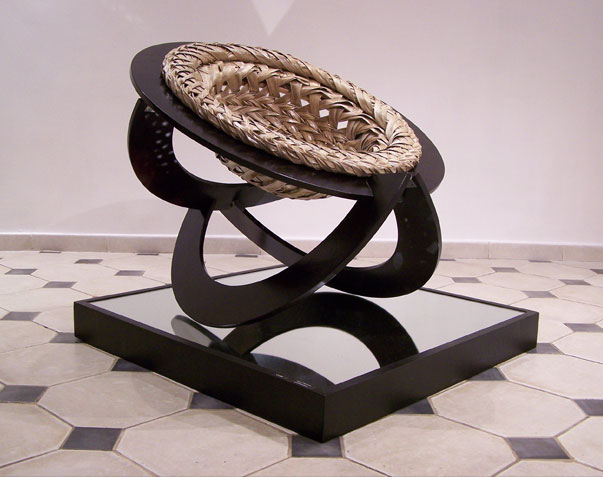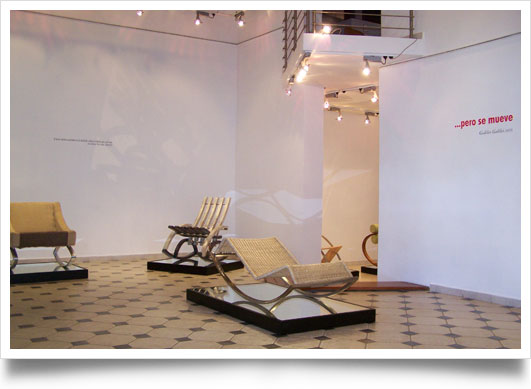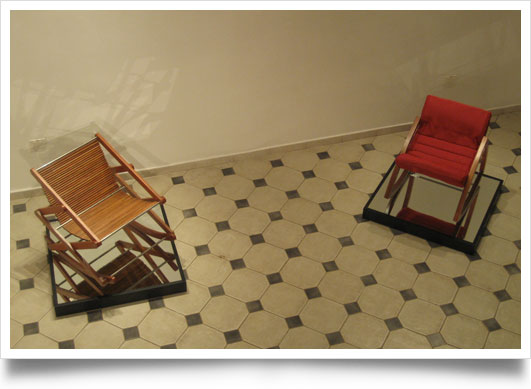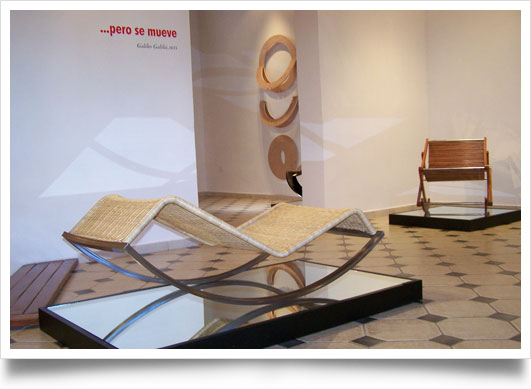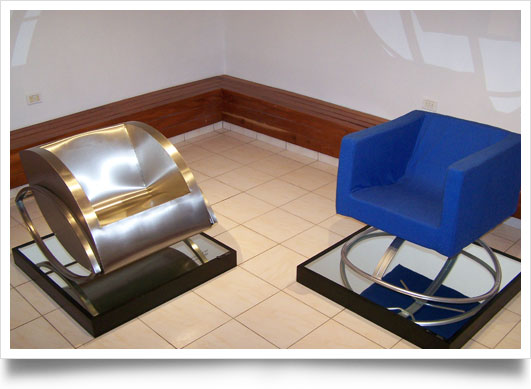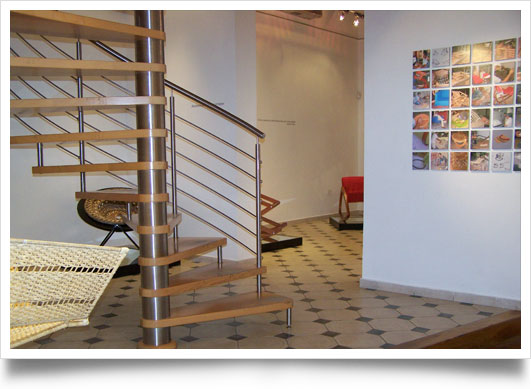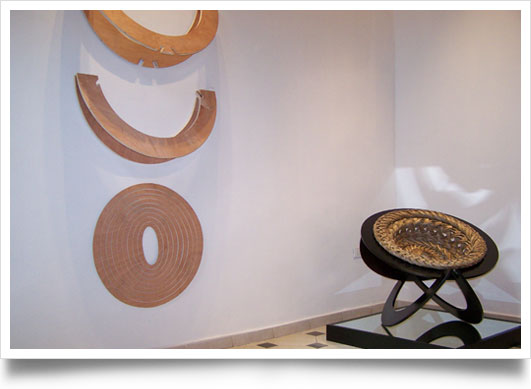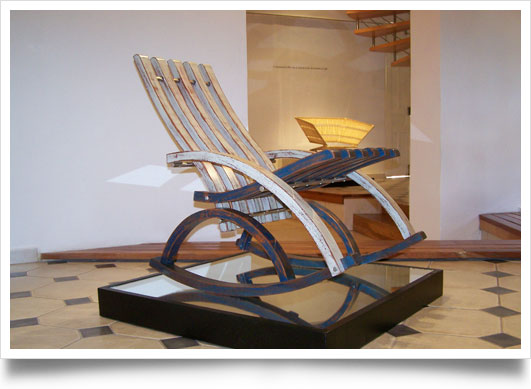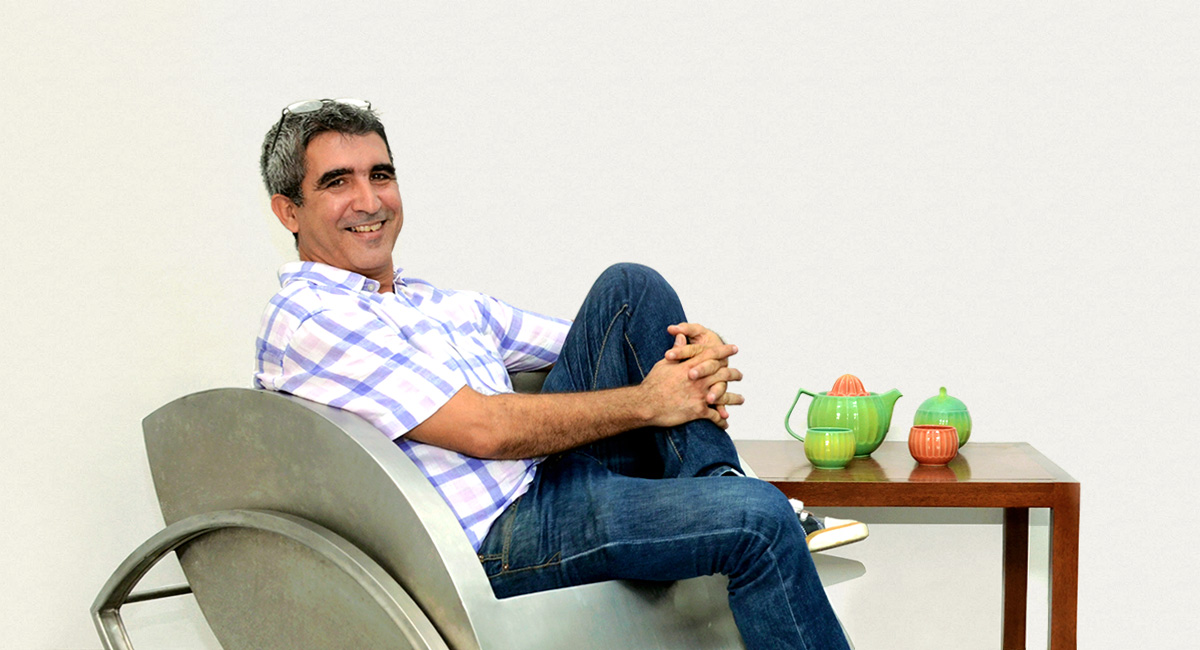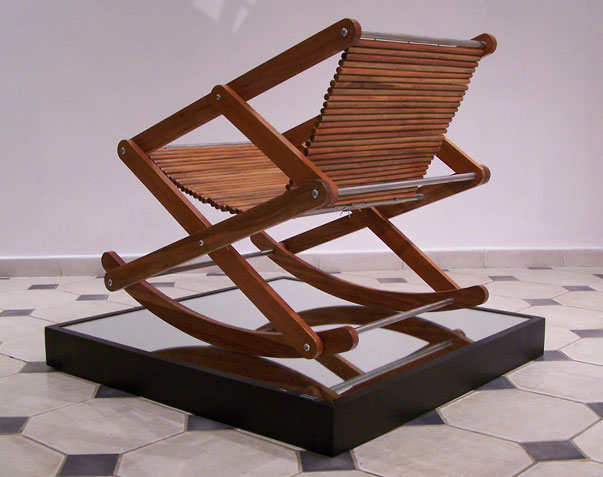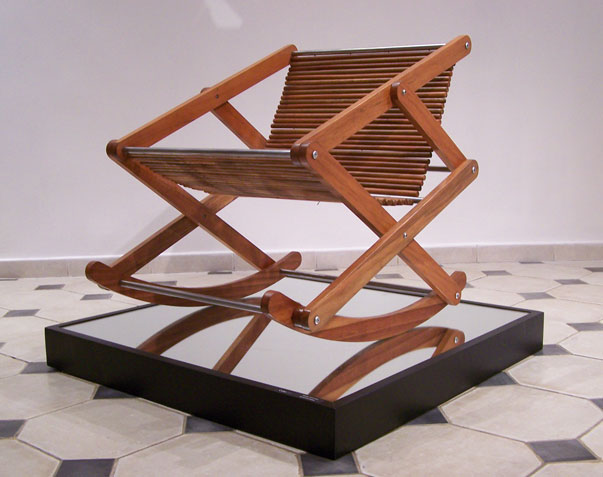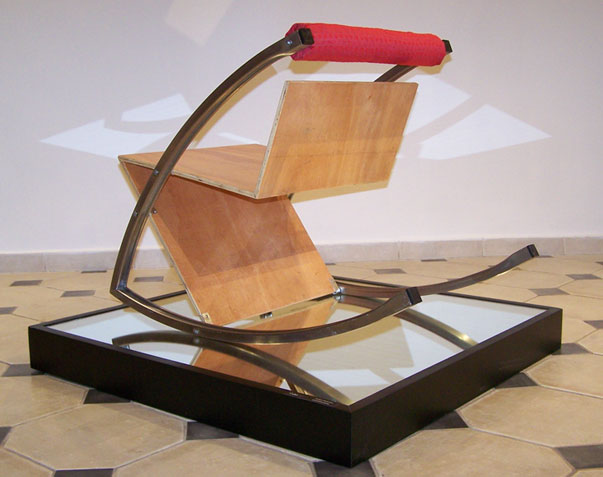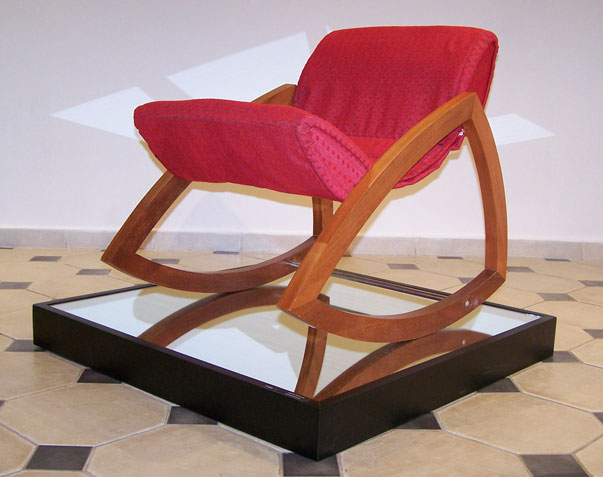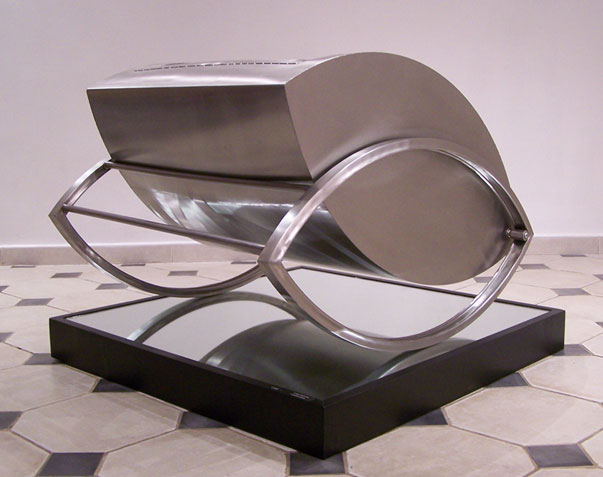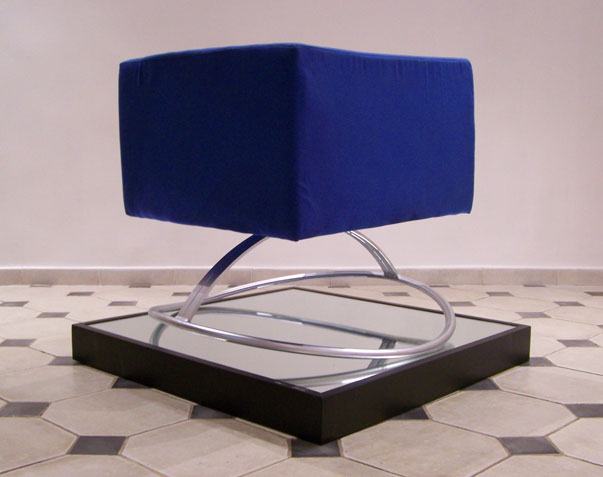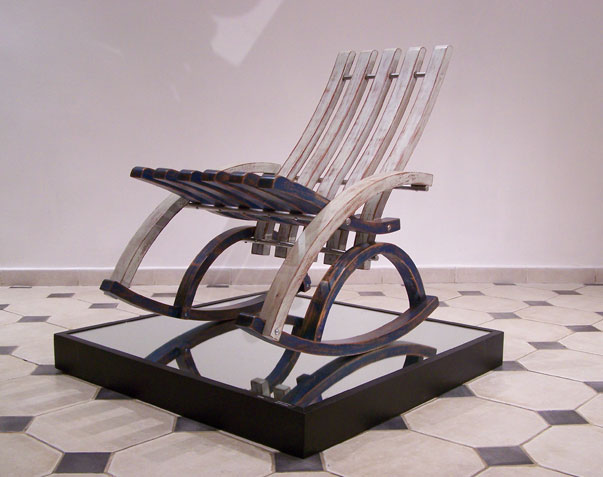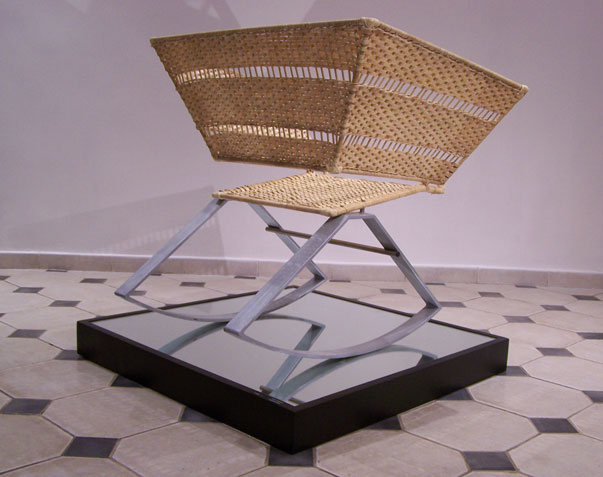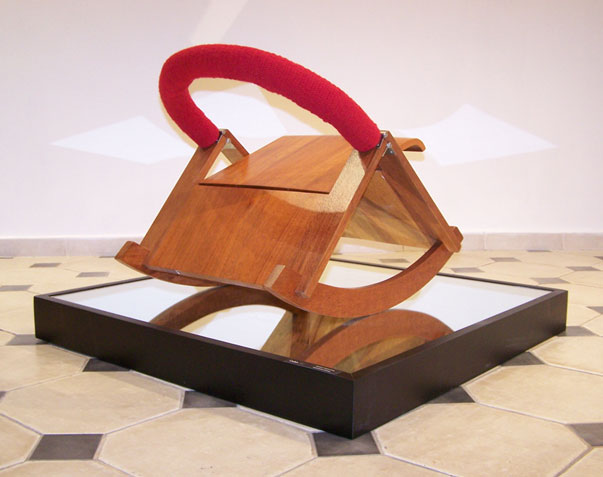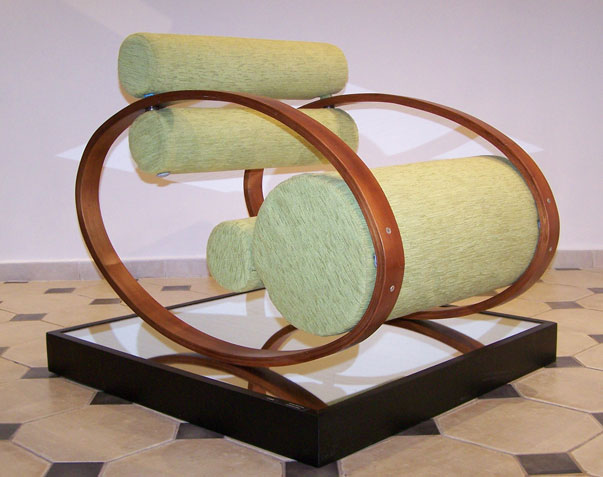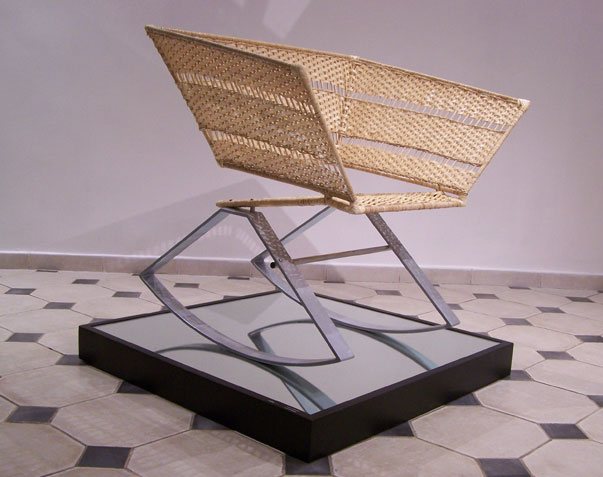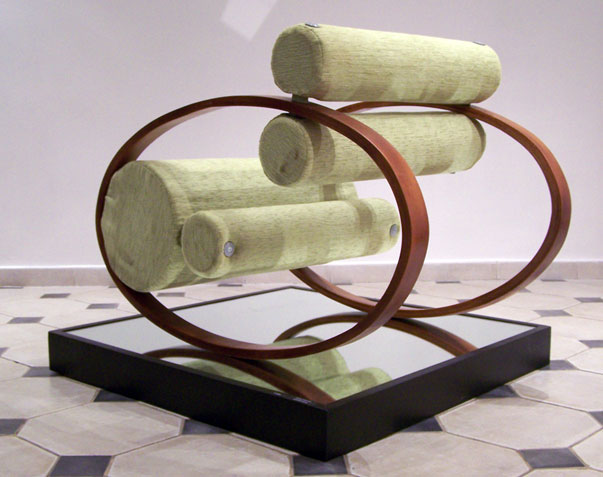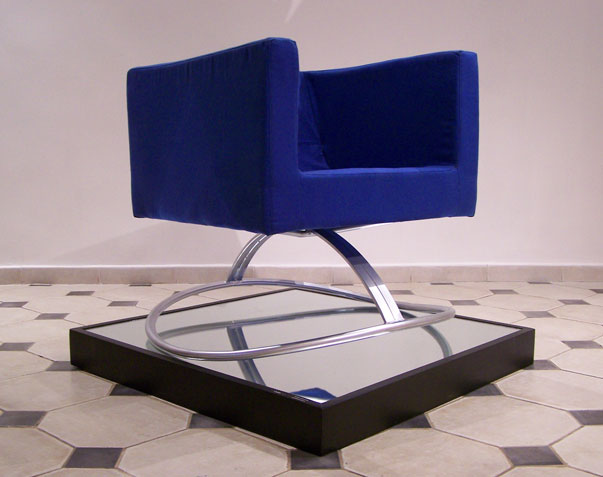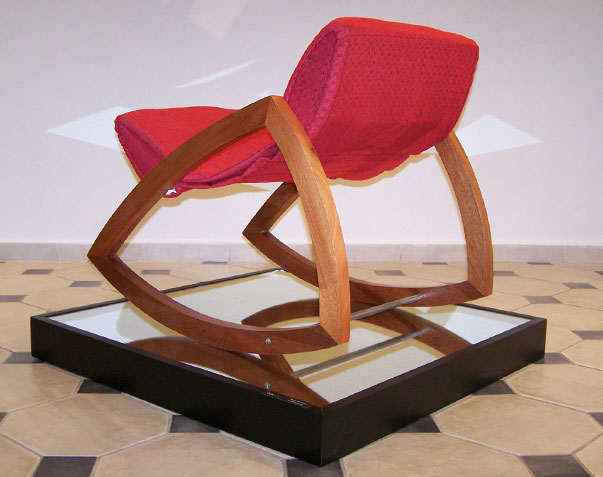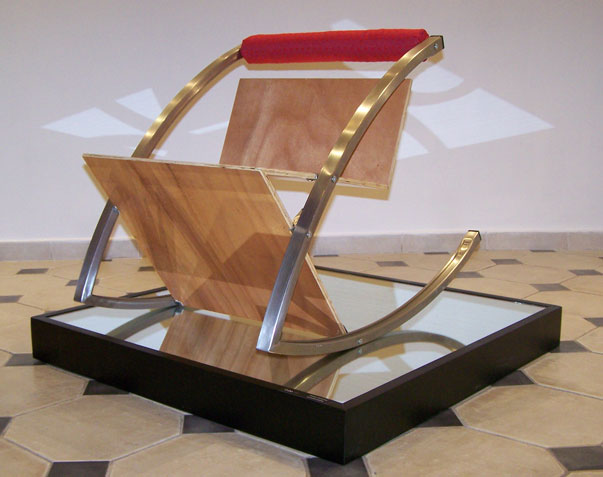But it moves
A Proposal to Move Cuban Design
They are rocking chairs with names, nationality and common sense. They are called Pancho II, Gema, Mirarte, Luna, etc. They are Cuban and have understood that the houses of this tropical island need freshness, ventilation and movement to make life more comfortable for a people that drinks the first milk bottles and tells the last stories on a rocking chair. The movement of the rocking chair contains the circle of life, from birth to death.
Villa Manuela Gallery at UNEAC opened its halls to these furniture pieces that are part of a twelve-piece exhibition named “but it moves”. It is a proposal of designers Luis Ramírez and Miguel Garcés, who assure that their work took into consideration the heat in Cuba, where there are too many upholstered furniture pieces. In contrast, almost all these proposals “transpire, have openings, are not closed furniture pieces, which is what suffocates people,” said Miguel.
The young creators tried to use a wide assortment of materials in search of a functional and economic diversity, while they show deep interest in creating an element of identity. The study of contemporary and world design is understood by them as a conceptual road to create a line of work that responds to the national requirements.
Luis commented: “We were delighted with the idea of doing something different from the last exhibition which also presented chairs but still to continue with the furniture. Besides, not too much attention has been paid to the rocking chair, there are very few contemporary designs, because it is in the United States that there is a usage of rocking chairs, and they all have much wood, they are very heavy and do not fit at all with the customs of the Cubans, who created the ‘comadrita’ (small rocking chair with no arms) to adjust it to the spaces.”
The idea was born from there, from the acceptance of this furniture piece in the Caribbean nation and its practical and aesthetic requirements. However, the creators’ message goes beyond: from the very title of the show they are inviting us to think of the certain and essential movement. According to Gabriel, “but it moves” is a phrase by Galileo in 1633, and in 2007 it is valid as if we had created it for this exhibition, because it tells of the need to move one of the main parts of design, because we are lacking good taste in the design of practical things for our homes.
Luis added that Galileo faced all those who did not believe that the Earth moves. This is not a confrontation with anyone, it is a call to all those who believe in design to defend it, and I think that all of us together will push it forward. Cuba has the will, we designers have wishes, it is the industry that remains quiet. We need the industry to start moving, to support us.
The call is shared by Moraima Clavijo Colom, Director of the National Museum of Fine Arts. Pure forms and primary colors, the beauty of the designs in their simplicity opposes the sometimes false, many-colored furniture pieces that are offered in the market. Let us support our artists, in this case our designers.
Miguel has designed products, identity manuals and stands in international fairs. Luis obtained the National Prize of Industrial Design with the Coral Ensemble in 1991. Both are graduates from the Institute of Industrial Design of Havana and in 2005 created the trademark Dekuba that identifies them in each one of their creative proposals.
The show remained open until November 16, with a message of Cuban-ness against the sterile static nature, the tacit assimilation of imported goods, and crying out for a dynamic dialog between the creators and the industry to add to the confidence shown by architect José Antonio Choy: “In spite of the cultural enchantment that characterizes the situation of object design and architecture in our country, Luis Ramírez and Miguel Garcés have evidenced with talent and creativeness that the good design inserted in the Cuban cultural tradition is still alive, and that the future may be hopeful”.
Por Giusette León García
Artworks
